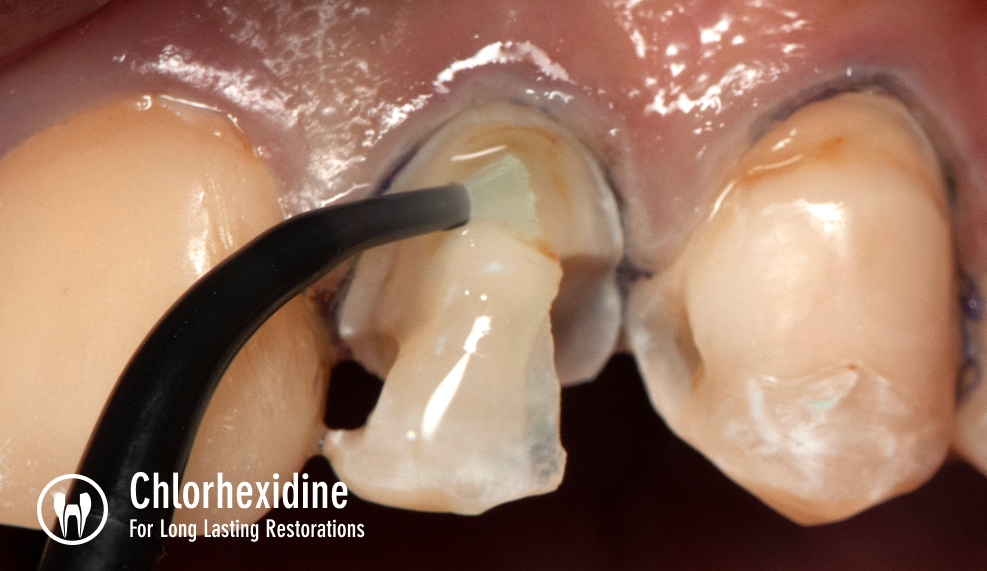By Dr. Gary Findley
In dentistry, few things are as important as strong, long-lasting bonds. As clinicians, we take great care to isolate our preparations—making sure saliva, blood, and sulcular fluid do not contact them at critical moments. Our restorations must withstand the forces of chewing, thermal cycling, and para-functional habits year after year. Placing restorations that will pass the test of time is a source of pride and helps us build long-lasting relationships with our patients. It is the type of restoration we would want in our own mouth as well as the mouth of anyone we cared about.
Some studies have shown that the average lifespan of a Class II restoration is 5–7 years; but with the products and materials we have available today, no dentist should be satisfied with that. For example, How many young teenagers in your practice floss like they should? I would guess very few. Placing MO or DO fillings in a teenager is not unusual and if we do not get longer than 5–7 years out of this work, how many times will that filling need to be replaced before a crown is an appropriate restoration? Each time a tooth is drilled, the pulp is inflamed. Most of the time the pulp, like other tissues that are traumatized, will completely recover but insults to the pulp have an additive effect. Eventually the tooth will be traumatized one too many times and it will not make a full recovery.
 Dentists already spend so much time and care to create restorations, why settle for any product that could hinder
Dentists already spend so much time and care to create restorations, why settle for any product that could hinder
the longevity of our work?
In this scenario, the patient we have seen as a teenager is now 40 years old and has had multiple Class II restorations placed and replaced—some with larger fillings and others with crowns. It would not be unusual for the patient to have required root canal therapy more than once. Not to mention if, for any reason, they did not have the money for a root canal, build-up, and crown, they would have had the tooth extracted. This scenario is completely unacceptable, and we should all be looking for ways to make the restorations we place last as long as possible.
In my mouth, I have a medium size MOL composite on a maxillary first molar that is over 23 years old. It was placed by Dr. Dan Fischer and although Dr. Fischer is an extraordinarily gifted dentist, I would argue the materials and protocols we have available to us today are superior to what was available at that time. So why be satisfied with anything less than what’s at the high end of possible?
 Consepsis solution is a 2.0% chlorhexidine gluconate solution free of emollients that interfere with bond strength.
Consepsis solution is a 2.0% chlorhexidine gluconate solution free of emollients that interfere with bond strength.
Chlorhexidine is routinely used in dentistry and incorporating it into our restorative protocol can help maintain bond strengths as well as make our restorations last longer. Chlorhexidine inhibits the action of Matrix metalloproteinases (MMPs) which are enzymes in dentin that are capable of degrading dentin’s extracellular matrix components. When dentinal collagen is lost in the resin adhesive hybrid layer the dentinal bond is weakened, and recurrent caries can occur.
There have been multiple reports showing that initial bond strengths to dentin can be maintained when enzyme-inhibiting protocols are used. In a study from Dr. Lorenzo Breschi, chlorhexidine remained in the resin hybrid layer and its effect was preserved after 10 years. 1
When is the best time to incorporate chlorhexidine into our restorative protocol? For total-etchers or etch-and-rinse dentists, it would be after you have etched the preparation. For dentists who prefer to use a self-etching primer, chlorhexidine should be used before the primer is applied.
 Consepsis antibacterial solution is recommended for procedural endodontic disinfection,
Consepsis antibacterial solution is recommended for procedural endodontic disinfection,
as a final endodontic rinse prior to canal obturation, 1–3 and prior to pulp capping.
This simple step can have a profound effect on the longevity of our restorations. Ultradent’s Consepsis™ solution is a 2.0% chlorhexidine gluconate solution free of the emollients that are present in many of the common chlorhexidine mouth rinses. These emollients can interfere with bond strength and should be avoided.
Dentists already spend so much time and care to create restorations, why settle for any product that could hinder the longevity of our work? Creating and maintaining elite dentinal bonds can increase the longevity of our restorations and improve the lives of our patients. Ultradent’s Consepsis solution can help.
1. Breschi L, Maravic T, Comba A, et al. Chlorhexidine preserves the hybrid layer in vitro after 10-years aging. Dent Mater. 2020;36(5):672-680. doi:10.1016/j.dental.2020.03.009







